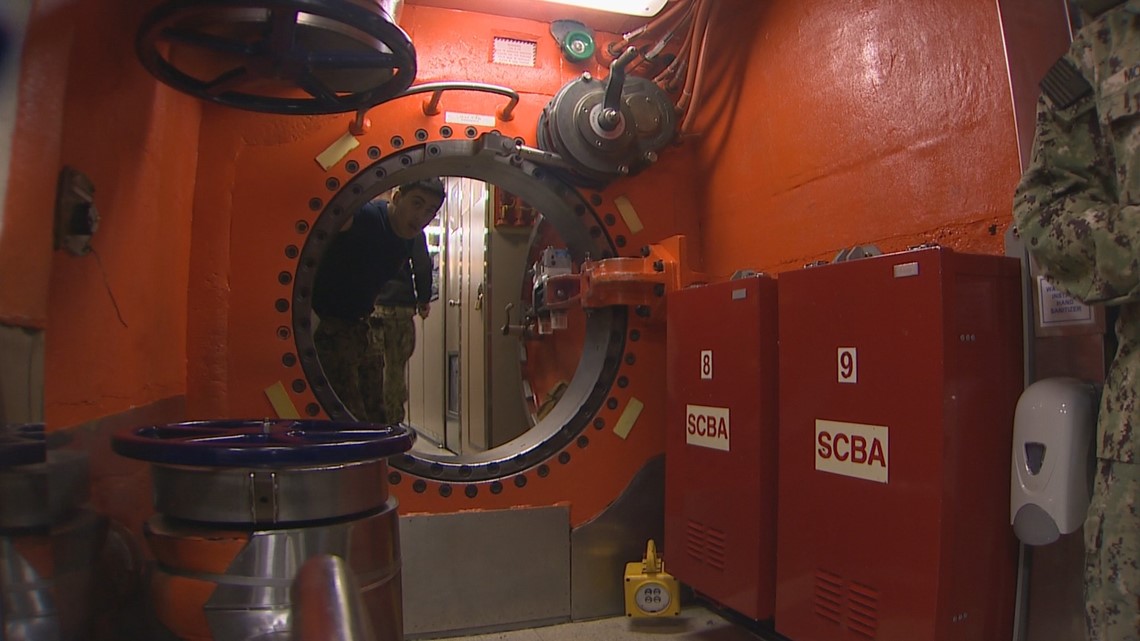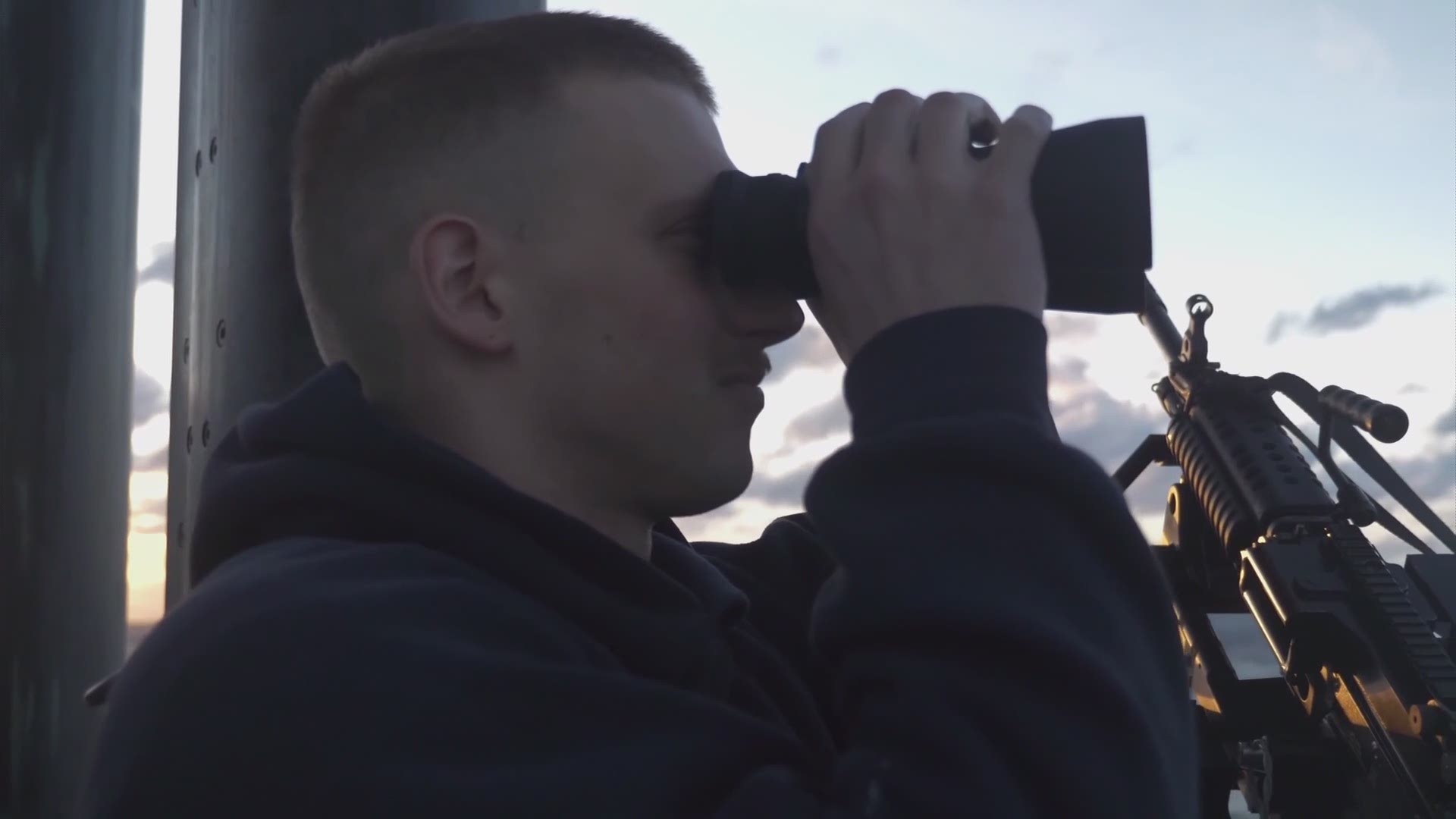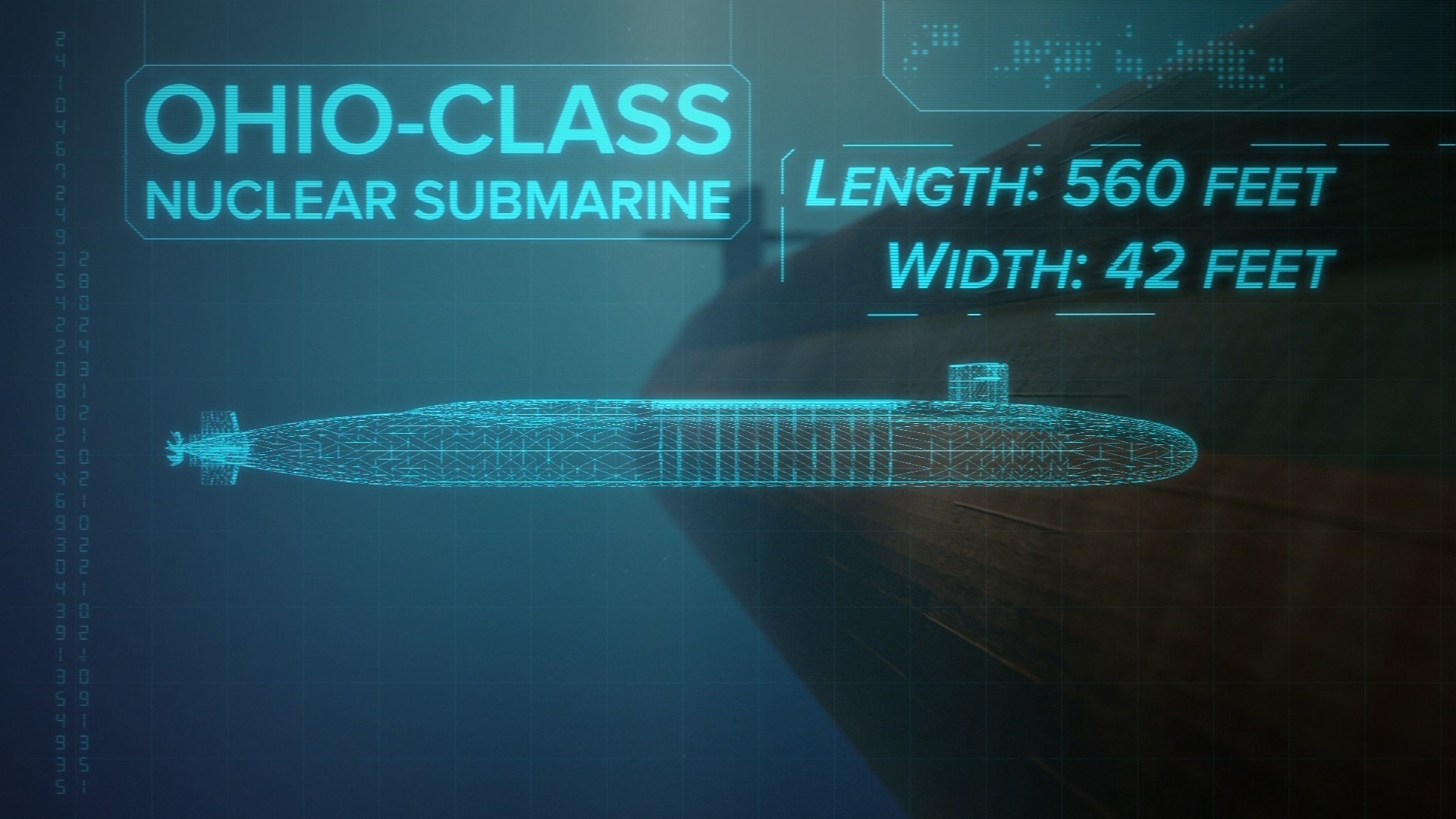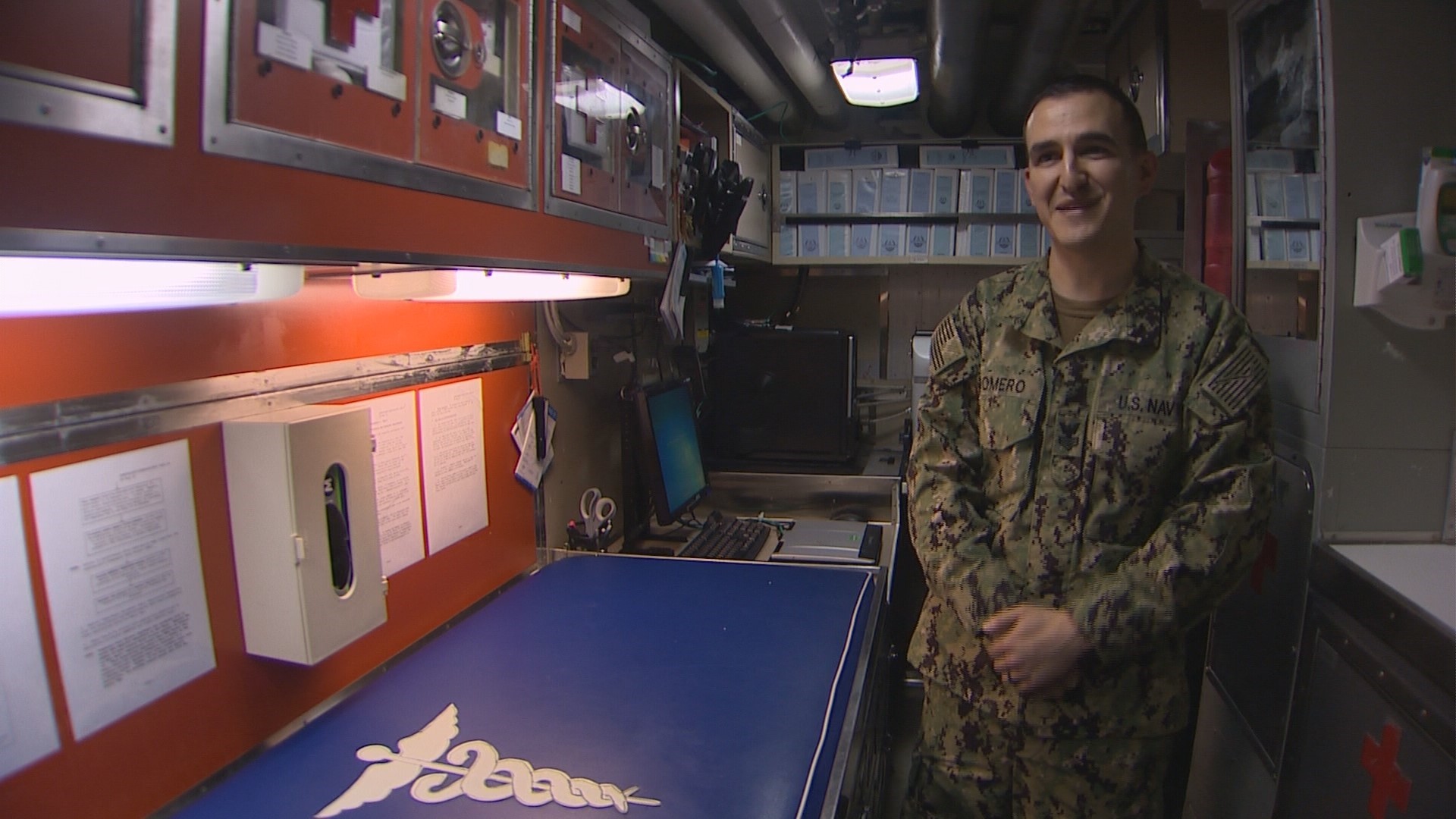The U.S. Navy's Trident submarines are defenders of freedom, silent stalkers, and one of the most powerful weapons on the planet. And for 40 years, they've been residing in Puget Sound’s backyard.
The Navy's Ohio-class nuclear submarines are behemoths. They are nicknamed "boomers" and there are 10 of them based at Bangor. Each is armed with an undisclosed amount of Mark 48 Advanced Capability torpedoes.
“An adequate supply to defend the ship in all situations,” said Chief Ronald Skramstad, lead fire control chief petty officer on board.
Traveling at more than 28 knots, the submarines can be guided to a target at least five miles away. The main event is aimed at the sky. Eight of the subs are equipped with a massive nuclear arsenal; the other two are loaded with conventional weapons: 154 Tomahawk missiles that can rain down upon an enemy.
What is a Trident sub?
At 560 long and 42 feet wide, the Ohio-class nuclear submarine is among the biggest in the world. It’s nearly as long as two football fields, or stood on end it’s almost as tall as Seattle’s Space Needle.
The giant sub checks in at more than 33 million pounds.
A nuclear reactor fuels this underwater titan for 20 years between refuelings. Its range is limited only by the amount of food it can carry for its crew – usually 15 officers and about 140 enlisted.
The silent sub can travel undetected to a depth of 800 feet officially armed with a plethora of Mark 48 Advanced Capability torpedoes, each 19 feet long and 3,700 pounds, that can be fired from four separate tubes and guided to their target in excess of five miles.
But the main event is pointed at the sky: 20 trident long-range ballistic missiles measuring 44 feet long and seven feet wide that can be fired while submerged. Each comprises a three-stage rocket that can propel it through the sky at nearly four miles per second. With a range of more than 4,600 miles, they deliver a powerful payload, each armed with eight separate nuclear warheads that can independently be guided to multiple targets.
The mere thought of that is enough to make any foreign enemy think twice about starting trouble.
Life on board
The life of a submariner (pronounced sub-muh-reen’-er in the U.S. Navy) is not for everyone. You live and work in cramped quarters much of the time with long periods of no natural light. A deployment is not a pleasure cruise.
"Really our mission is nuclear deterrence," said Blue Crew Commander Kenneth Roman.
There are two crews for every submarine, the Blue Crew and the Gold Crew. While one has control of the sub the other is on shore leave or in training. That ensures subs are not in port any longer than they need to be. Instead, they’re stealthily traveling the globe, ready to keep the peace.


Each deployment runs about three-and-a-half months with more than two months of that at sea.
Everything on board is scheduled with rotating shifts to keep things running smoothly. There is a set time for meals, sleep, social time, and work.
"We are doing something all day long, from the time we step on board until 20-hundred at night," said Roman.
Everybody on board has a specific job, and they’re expected to know it backward and forward.
Top to bottom the sub and its crew are prepared for battle, but they’re also armed with the knowledge that a successful mission means never firing a shot. Everyone on board knows their role as peacekeeper. Tons of training with daily drills ensures an American way of life.
With stakes this high, life on a submarine can be stressful but also rewarding.
Q&A with the reporter
KING 5's Greg Copeland sat down with anchor Lori Matsukawa to answer common questions submitted by viewers.
Can the public ever tour the subs?
Yes, but it is hard to do. The Navy checked each KING 5 employee’s social security number and other personal identification and recorded the identification numbers of the cameras. No electronic devices other than the cameras were allowed on board – so no phones.
Is any of this information classified?
No. KING 5 did not publish any information that was classified. All the information in the story was information that the Navy decided the public could see. In fact, there was a member of the Navy following the cameraman to see what was being filmed. After filming, the Navy gave KING5 a list of things to watch out for to make sure it was not accidentally included in a clip and the footage was stored on only one hard drive.
What about laundry and showers?
Yes, the sub has both since crews are deployed for months, and space is tight. For example, the sleeping berths have spots for nine people – but there aren’t nine people there at once! Crews do things in shifts, since the sub is running 24 hours a day, like any other large ship.
How much fuel does it go through during the deployment?
The nuclear-powered submarine only needs to refuel once every 20 years. However, they do need to restock food. Deployments last for about two to three months. The subs can also produce their own clean air.
Does it feel claustrophobic?
Greg Copeland: “I’m 6’4 and getting around a sub like that – and that’s the biggest one. The attack subs are much smaller in the 200 plus feet. At 560 feet you’d expect things to maybe bigger but again they utilize all that space and you have so much going on that you just really have to watch your head and that’s what I found myself doing most of the time.”
“Spending a couple hours on there – not too bad. I don’t that I could spend the night on one or certainly I don’t know how I could handle a couple-month deployment on one.”



